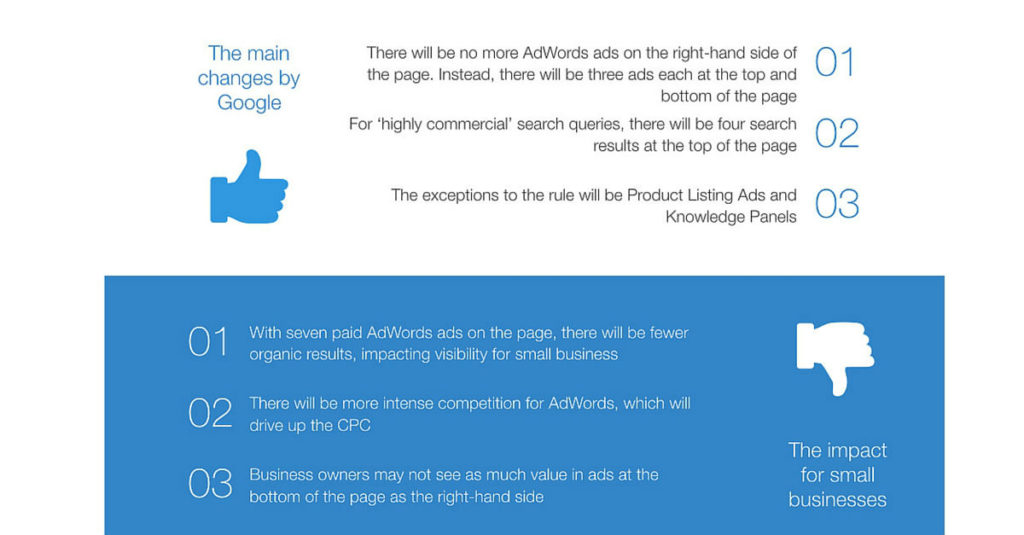Google has changed its search result page, removing ads from the right-hand side and replacing organic results with more paid search listings.
You probably noticed the change already, when you search on Google, you will no longer see AdWords advertisements on the right-hand side of the page.
Instead, there will be three ads at the top of the page, four for ‘highly commercial’ searches such as car rentals, hotels or insurance and three ads at the bottom of the page. And what are ‘highly commercial queries’? Google has defined this as a search query with ‘a clear intent to purchase.’
Wedged between the paid ads are a few organic search results.
This is further proof that the new search wars will be fought on mobile devices.
Needless to say, the changes are very significant. Carol Mau, Director at Swoop Digital, a Melbourne-based digital marketing agency talks of the impact, “The change will certainly drive up average CPCs as the competition for the top slots increases. We think this is going to get ugly. We will have to re-evaluate our average positions and bids.”
The total number of ads on the page has dropped from around 10 to 7. This will make the competition for AdWords increasingly fierce and expensive. Also, what is not known at this stage is if customers will see as much monetary value in ads at the bottom of the page as the right-hand side.
Google has currently said that the two exceptions to the “no ads on the right” rule are Product Listing Ads (PLA) and Knowledge Panels. Over the next few weeks, Google is expected to tweak the PLAs so they could appear either on the top or on the right hand side, depending on the search term.
The move by Google means big changes for small businesses that depend on organic search results for visibility. The SEO manager’s task has just become much harder. Businesses will have to very sharply identify and target their market to maintain a decent ROI.
Clearly articulating the business proposition, knowing customer preferences well and using more precise keywords will be the way forward. If relevant, businesses would also do well to look at digital hyper-local marketing options. And more business will have to consider increasing the spend on AdWords.

Why has Google made these changes?
Firstly, the layout of the web page is more in line with the mobile screens. Digital marketing experts believe the change may be aimed at standardizing the advertising ecosystem across devices.
Secondly, the ads on the right-hand side did have a lower click-through rate and Google’s move will certainly eliminate this. Google’s move further establishes the fact that all the action in search is moving from desktop to mobile.
In a nutshell, the same number of businesses (or more) will be fighting over less, but better positioned and highly visible space. And of course, that will cost a fair bit more.
At Swoop Digital, we will be watching closely for the changes and impact as the space continues to evolve. Keep an eye out for our newsletters and social media posts.
